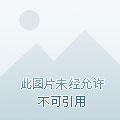With the first gunshots of the Korean War, North Korea crossed the 38th Parallel first, but South Korean troops deserted
Text/No Counting Reading History
After the end of the Second World War, the whole world became almost two extremes.
Either follow the socialist power Soviet Union and join the socialist camp, then follow the capitalist power united States and join the capitalist camp.
The Korean Peninsula, on the other hand, is a little different.

1
start
The Korean Peninsula has become the main battlefield of playthings and games between the two great powers.
North Korea, later North Korea, received soviet aid, and a large number of Soviet tanks, supplies, and weapons entered the North Korean army and armed North Korea.
South Korea, later South Korea, received support from the United States, but the United States did not seem to be so concerned.
The armed North Korean forces immediately launched an attack on South Korea, and both South and North Korea wanted to destroy the other camp and unify the Korean Peninsula.
2
besiege
The story we are going to tell today is the first Battle of Seoul, which took place on June 25, 1950, and was the first gunshot of the Korean War.
It was on June 25 that the North Korean commander had been premeditated for a long time, and the Assembled North Korean troops rushed across the 38th Line under the command of the commander.
This was supposed to be the dividing line between South and North Korea.
The menacing North Korean forces rushed toward Seoul, while the South Korean forces did not make much preparation.
The North Korean attack was sudden, much to everyone's surprise.
Soon, North Korean troops came to seoul, and a large number of T-34 tanks were laid out, which were the weapons of war reinforced by the Soviet Union.
As soon as the commander gave the order, the attack of the North Korean forces began.
A large number of T-34 tanks rushed out and rushed to the front of the troops, and the long barrels flashed with penetrating light.
For a moment, the South Korean soldiers in Seoul were panicked, and there were not many anti-tank weapons in Seoul.
Faced with so many T-34 tanks, the soldiers of the South Korean forces did not know what to take to resist.
Before the South Korean commander in Seoul could make a decision, the shells of the North Korean troops hit the head of Seoul, and for a time, Seoul was in chaos.
The people of the city began to pack up their gold and silver and prepare to flee, and on the battlefield, human life was the least valuable.
North Korean artillery began to shell, and a large number of shells rushed toward the South Korean positions in Seoul, and a large number of South Korean soldiers were engulfed by artillery fire.
The commander of the South Korean forces saw this situation and immediately turned to the nearby city for help, and organized his troops to counterattack.
Without anti-tank weapons, South Korean soldiers had to use their flesh and blood to block the tank attack.
3
fail
South Korean soldiers rushed up with explosive packets, but most of them fell on the way to the charge, either engulfed by artillery fire or hit by bullets.
Gradually, North Korean tank troops rushed to the gates of Seoul and blasted the gates of Seoul open with artillery shells.
Tanks rushed to the front, followed by North Korean infantry.
The North Korean troops rushed straight in and rushed into Seoul, ready to fight with south Korean soldiers.
By this time the South Korean forces were no longer able to fight, at least, they were powerless to threaten the T-34 tanks.
The commander looked cold, knowing that Seoul would definitely not be able to hold it, and began to let the troops converge and immediately withdrew from Seoul.
Resources:
Dictionary of World War II, Dictionary of International Politics, Korean War